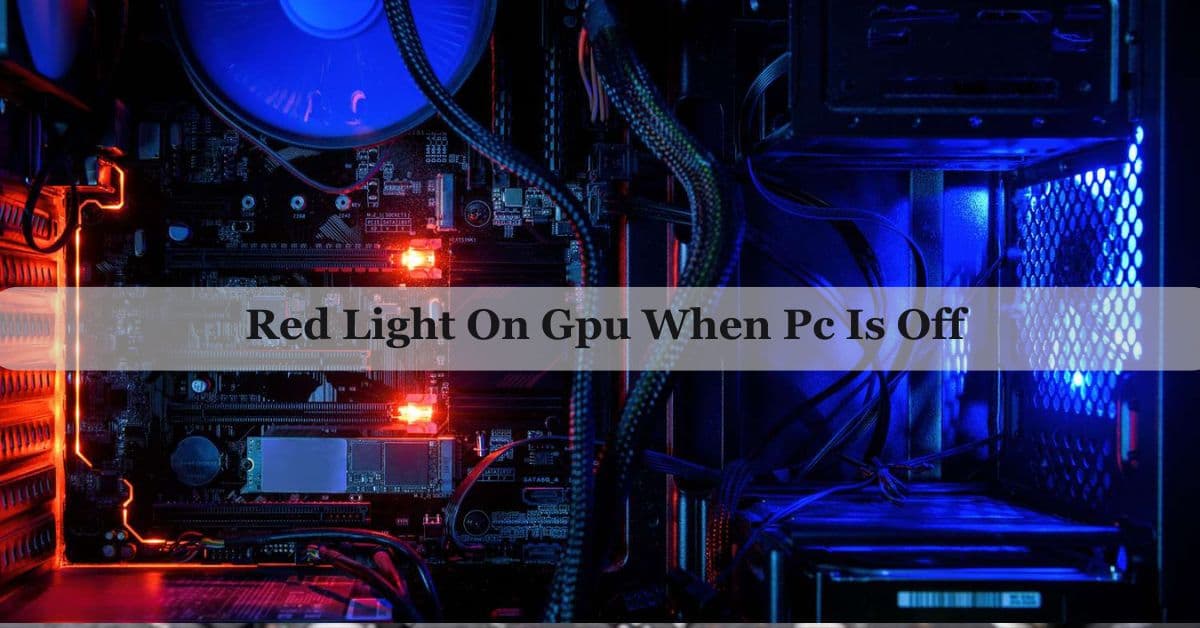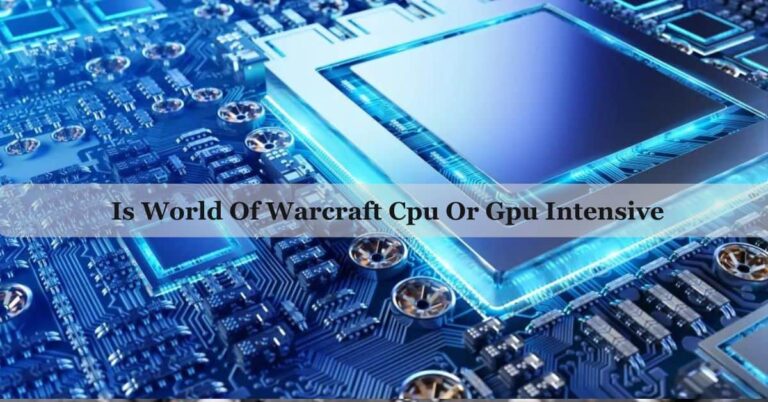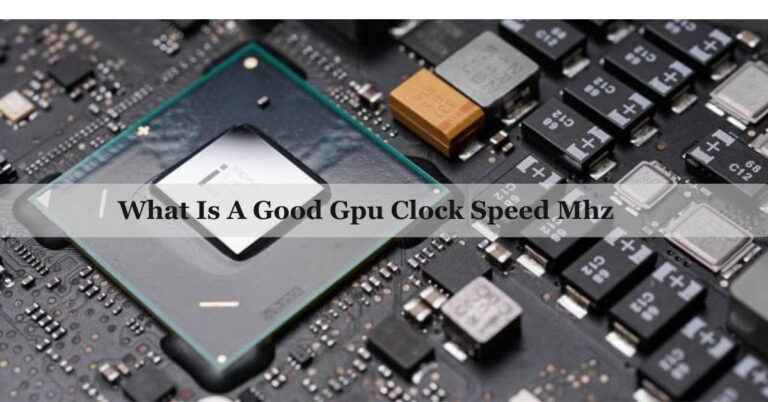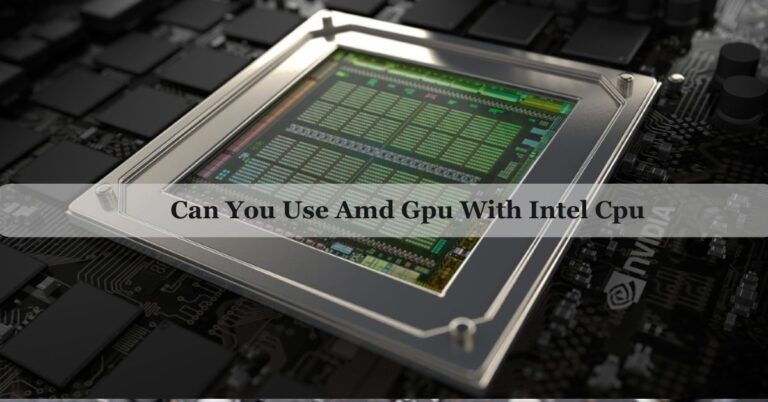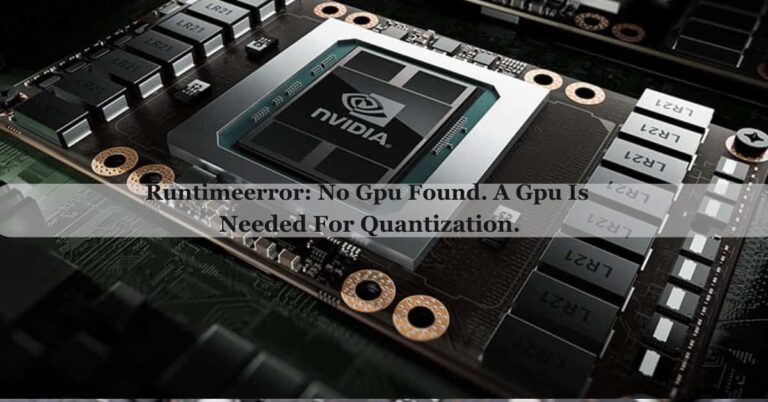Red Light On Gpu When Pc Is Off – Don’t Panic, Check This Now!
I noticed a red light on GPU when PC is off, which worried me. After checking the power connections and updating the BIOS, I found that a loose power cable was the culprit. Re-securing the cable fixed the issue, and the red light disappeared.
A red light on GPU when PC is off usually means there’s a problem with power or connections. Check the power supply, cables, and make sure the GPU is properly seated in the motherboard. If the problem continues, reach out to the manufacturer for assistance.
Seeing a Red Light on Your GPU When Your PC Is Off? Wondering what it means and how to fix it? Dive into our article to discover common causes, easy fixes, and expert tips to solve the problem and keep your PC running smoothly!
What Does The Red Light On My Gpu Mean?
A red light on GPU when PC is off means there is a problem, usually related to power or connections. This light can indicate that the GPU isn’t getting enough power, has a loose or faulty connection, or there’s an issue with the motherboard.
It can also be a sign of a hardware fault within the GPU itself. To fix this, check that all power cables are securely connected, ensure the GPU is properly seated in its slot, and make sure your power supply unit is working correctly.
Why Is There A Red Light On Gpu When Pc Is Off?
When you notice a red light on GPU when PC is off, it typically indicates underlying issues that need attention. Here are some common reasons:
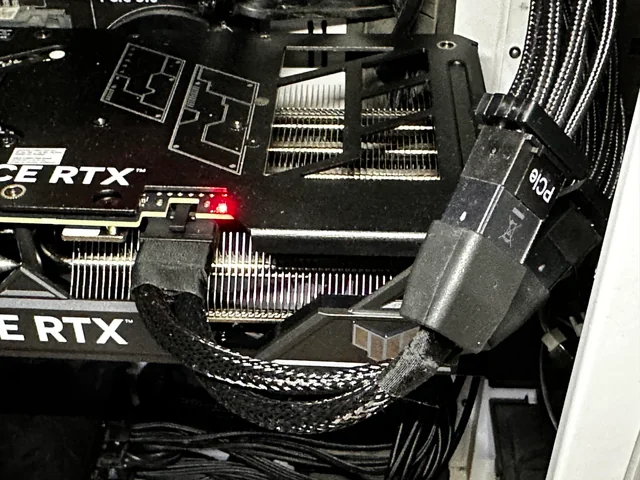
Power Supply Issues:
Insufficient power from your PSU or faults within the power supply unit itself can cause the GPU to display a red light. Ensuring your PSU is capable of supplying adequate power and checking for any issues with its functionality is crucial.
Hardware Problems:
A faulty GPU, whether due to manufacturing defects or wear over time, can trigger the red light. Additionally, problems with the motherboard’s PCIe slot or power delivery can also contribute to this issue.
Connection And Setup Concerns:
Loose or improperly connected cables between the GPU, PSU, and motherboard can disrupt power delivery, leading to the red light indicator. Checking and securing all connections is essential.
Overheating:
Although less common when the PC is off, overheating caused by poor ventilation or a malfunctioning cooling system can still be a factor. Ensuring adequate airflow and proper cooling solutions can help prevent overheating-related issues.
Manufacturer-Specific Indicators:
Different GPU manufacturers use red lights to indicate specific problems or alerts. Consulting your GPU’s manual or the manufacturer’s support resources can provide detailed information on what the red light specifically indicates for your GPU model.
How To Fix The Red Light On Your Gpu?
To resolve the red light issue on your GPU, follow these steps:
- Check Power Supply: Make sure your power supply (PSU) gives enough power for your GPU. Check all power connections to ensure they are securely plugged in. Testing the PSU with a known working unit or PSU tester can help identify any power supply issues.
- Inspect GPU and Connections: Visually inspect your GPU for any visible damage or signs of overheating. Re-seat the GPU firmly into its PCIe slot on the motherboard to ensure it’s properly connected. Verify all cables connecting the GPU to the PSU and motherboard are tightly secured and undamaged.
- Update BIOS/UEFI Settings: Access your motherboard’s BIOS/UEFI settings and reset them to default. Update to the latest BIOS/UEFI firmware version from the motherboard manufacturer’s website to ensure compatibility and stability with your GPU.
- Monitor and Manage Cooling: Ensure your GPU is adequately cooled to prevent overheating issues. Clean any dust or debris from the GPU’s cooling fans and heatsink regularly. Consider improving overall case airflow with additional fans or upgrading to a better-ventilated PC case if necessary.
What Role Do Gpu Drivers Play In The Red Light Issue?
GPU drivers play a crucial role in the overall performance and functionality of your graphics card, but they typically do not directly cause the red light issue itself. Instead, GPU drivers ensure that your operating system can communicate effectively with the GPU, enabling it to perform tasks like rendering graphics and processing data efficiently.
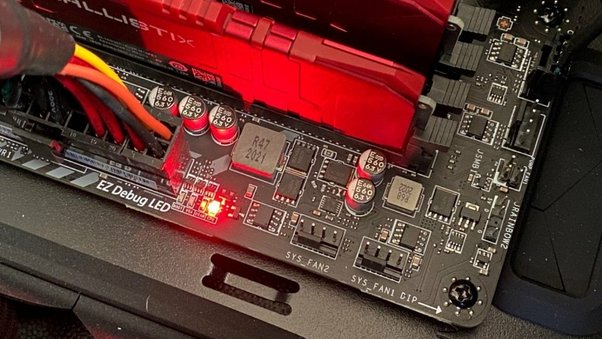
However, outdated or incompatible GPU drivers can sometimes lead to performance issues or system instability, which might indirectly manifest as hardware problems that trigger the red light indicator.
Therefore, while ensuring your GPU drivers are up-to-date is essential for optimal performance, resolving a red light issue usually requires focusing on hardware, power supply, and connectivity troubleshooting rather than driver updates alone.
Is It Safe To Use My Pc If A Red Light On GPU When PC Is Off?
It’s generally not safe to use your PC if the GPU has a red light when the PC is off. This light usually means there’s a problem with power, connections, or the hardware itself. Continuing to use the PC without addressing the issue could lead to further damage to the GPU or other components.
To avoid potential risks, it’s best to troubleshoot the problem first by checking all power connections, ensuring the GPU is properly seated, and verifying that your power supply is adequate. If the issue persists, seek professional help or contact the GPU manufacturer for support.
Can Updating My Bios Fix The Red Light Issue On My Gpu?
Updating your BIOS can sometimes fix the red light issue on your GPU. The BIOS (Basic Input/Output System) controls how your computer’s hardware communicates with each other. Sometimes, a BIOS update can resolve compatibility issues or bugs that might be causing your GPU to show a red light.
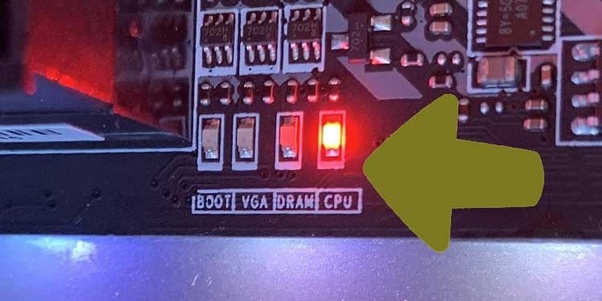
To update your BIOS, you need to:
- Visit your motherboard manufacturer’s website.
- Download the latest BIOS update for your specific motherboard model.
- Follow the instructions provided to install the update.
However, it’s important to note that updating the BIOS doesn’t guarantee a fix for the red light issue. If the problem is due to power supply issues, loose connections, or a faulty GPU, a BIOS update alone won’t solve it.
Always ensure all hardware components are properly connected and functioning before attempting a BIOS update.
Could Software Issues Cause The Red Light On My Gpu?
Software issues generally do not cause the red light on your GPU. The red light is typically a hardware indicator, meaning it signals a physical problem like power issues, loose connections, or a faulty GPU. However, software issues can sometimes indirectly contribute to problems that might trigger the red light.
For example:
- Driver Problems: If your GPU drivers (software that helps your operating system communicate with the GPU) are outdated or corrupted, they can cause the GPU to perform poorly or behave erratically. While this might not directly cause the red light, it can lead to overheating or instability, which might.
- Overclocking Software: If you’ve used software to overclock your GPU (run it faster than its normal speed), it can cause the GPU to overheat or become unstable. This can potentially lead to a red light if the GPU’s sensors detect a problem.
- BIOS/UEFI Settings: Incorrect settings in your computer’s BIOS or UEFI firmware can cause hardware issues. For example, incorrect voltage settings can affect power delivery to the GPU.
In most cases, the red light is due to hardware issues. To address it, check power connections, ensure the GPU is properly seated, and verify that your power supply is working correctly. Updating drivers and checking software settings can help prevent related issues but usually won’t directly fix a red light on the GPU.
FAQs:
1. My Gpu Broken If There’s A Red Light?
A red light on your GPU doesn’t necessarily mean it’s broken. It usually indicates an issue with power, connections, or overheating. Check all connections and power supply first, and if the problem persists, seek professional help.
2. Can A Faulty Power Supply Cause A Red Light On My Gpu?
Yes, a faulty power supply can cause a red light on your GPU, indicating it’s not receiving adequate or stable power. Ensuring your power supply is functioning correctly and providing sufficient wattage is crucial to resolving this issue.
3. Should I Worry If I See A Red Light On My Gpu?
Yes, you should worry if you see a red light on your GPU, as it usually indicates a problem with power, connections, or the hardware itself. Check connections and power supply, and seek professional help if the issue persists.
4. How Do I Check If My Gpu Is Properly ConnecIs ted?
To check if your GPU is properly connected, make sure it is fully seated in the PCIe slot and that all power cables are securely plugged in. Also, ensure there are no visible signs of damage to the connectors or cables.
5. What Should I Do If I Still See A Red Light After Troubleshooting?
If you still see a red light after troubleshooting, contact the GPU manufacturer for support or consider professional repair services. They can help diagnose and fix the issue or determine if the GPU needs replacement.
6. Will Cleaning My Gpu Help With The Red Light Issue?
Cleaning your GPU can help if dust is causing overheating or poor connections, but it won’t fix hardware or power issues that might be causing the red light. Always check connections and power supply first.
7. Can The Red Light On My Gpu Affect My Pc’s Performance?
Yes, the red light on your GPU can affect your PC’s performance if it indicates issues like power problems or overheating. Fixing the red light issue often resolves performance problems.
8. Can A Surge Protector Prevent The Red Light On My Gpu?
A surge protector can help prevent power surges that might damage your GPU, but it won’t fix or prevent a red light caused by hardware issues or power supply problems. For red light issues, check connections and power supply.
9. How Do I Check If My Gpu Is Properly Connected?
To check if your GPU is properly connected, ensure it’s firmly seated in the PCIe slot and that all power cables are securely plugged in. Also, inspect for any visible signs of damage or loose connections.
10. What Should I Do If I Still See A Red Light After Troubleshooting?
If you still see a red light after troubleshooting, contact the GPU manufacturer for support or seek professional repair services to diagnose and fix the issue.
Conclusion:
A red light on GPU when PC is off usually signals a hardware or power issue. Check connections, power supply, and the GPU itself. If troubleshooting doesn’t resolve it, seek professional help to prevent potential damage and ensure your PC runs smoothly.

James George is a GPU expert with 5 years of experience in GPU repair. On Techy Cores, he shares practical tips, guides, and troubleshooting advice to help you keep your GPU in top shape. Whether you’re a beginner or a seasoned tech enthusiast, James’s expertise will help you understand and fix your GPU issues easily.

